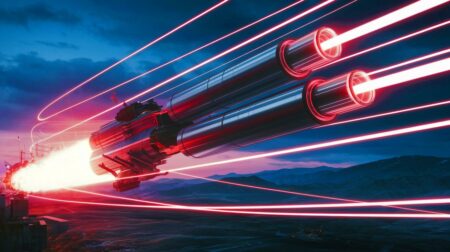Hydropower dams are widely seen as preferred alternatives to coal-fired power plants based on the assumption they do not emit CO2. Yet hydropower dams can also drive up CO2 emissions, if indirectly so.
A team of scientists at Stanford University in the United States has found that since prolonged droughts significantly reduce the effectiveness of hydropower dams, carbon emissions can shoot up in areas where hydropower is a significant source of energy generation. Between 2001 and 2015, longer spells of drought that put hydropower dams out of action caused an extra 100 million tons of carbon dioxide to be released across 11 states in the western U.S., the researchers explain in a study.
California, which seeks to become a carbon-free state, alone contributed around 51 million tons. That total 100 million tons equals adding 1.4 million vehicles each year to the region’s roadways, the researchers observe. As climate change is expected to wreak havoc with weather patterns, they emphasize incorporating low-carbon energy sources to wean ourselves off fossil fuels and rein in our carbon emissions.

“One advantage of solar and wind is that they continue operating during droughts,” Julio E. Herrera Estrada, a postdoctoral scholar of Earth System Science at Stanford University who was an author of the study, tells Sustainability Times. “In fact, there are generally fewer clouds during droughts, which would help increase solar power capacity. Also, expanding our electricity storage capacity would dramatically reduce the shortcomings of intermittent renewables, especially if this storage is deployed across a large electricity grid.”
Yet solar power, too, has its drawbacks. For one thing, storing energy obtained from sunshine for longer periods is not possible at the moment because of the limited capacity of batteries, although teams of researchers are working on a new generation of batteries with far better energy storage capacities. For another thing, solar energy is set to remain an intermittent energy source across much of the United States where sunshine is in short supply for most of the year.
That leaves another low-carbon option that is not weather-dependent: nuclear energy.
“There are two competing aspects regarding renewables in relation to climate change. We need renewables, such as hydropower, to reduce the overall emissions from the power sector to prevent the impacts of climate change from becoming even more devastating,” Herrera Estrada explains. “On the other hand, the electricity sector will need to work on solutions that will make it more resilient to future shocks, such as droughts, heat waves, and wildfires,” he elucidates. “In the end, to have a reliable, affordable, and low-emitting electricity sector that is resilient to climate change, it will be necessary to diversify our low-emissions energy sources, increase our energy efficiency, and expand our ability to store energy across the grid.”
That is why the Stanford scholar argues the diversification of low-carbon energy sources should include apportioning a larger share to nuclear power in the future energy packages of industrialized nations like the U.S. “Nuclear power could contribute to a relatively more reliable, low-emissions energy sector,” Herrera Estrada says. “Some of the advantages of nuclear power over coal and natural gas power plants are that nuclear power is a low-emitting source, it can generate large amounts of electricity at low prices, and it is quite safe, particularly in the U.S., despite common misconceptions that state otherwise.”
Although nuclear energy is not as prominent across the U.S. as it once was, the country is still the largest producer of nuclear power in the world, accounting for a third of global nuclear generation of electricity, according to The World Nuclear Association. The U.S.’s 98 nuclear reactors, located in 30 states, produced 805 billion kWh of electricity in 2017, or a fifth of total electrical output in the U.S.
“Since 2001 these plants have achieved an average capacity factor of over 90%, generating up to 807 TWh per year and accounting for about 20% of the total electricity generated,” the industry body explains. “The average capacity factor has risen from 50% in the early 1970s, to 70% in 1991, and it passed 90% in 2002, remaining at around this level since,” it adds. “In 2016 it was a record 92.5%, compared with wind 34.7% (EIA data). The industry invests about $7.5 billion per year in maintenance and upgrades of the plants.”
Yet despite the relatively strong position of nuclear energy in the world’s largest economy, locally generated electricity is still derived predominantly from power plants burning coal and natural gas, which together account for some 60% of the country’s electricity output. Even with an ever larger share for solar, wind and hydropower, especially in greener states such as New York and California, a large-scale low-carbon transition will need to entail a boost to nuclear energy output.
A way to do so would be to invest in small modular reactors (SMRs), which are cheaper to construct and can serve as reliable sources of low-carbon energy even away from large grid systems, which would obviate the need for upgrading grids in certain areas at great cost. In addition, a combination of renewables with nuclear could boost both the resilience and flexibility of energy generation in the country.
“Currently, nuclear power plants tend to be operated as ‘baseload generation’ such that they are always producing electricity, which can sometimes lead to wasted electricity and poor economic incentives for the nuclear power plant,” Herrera Estrada explains. “However, nuclear reactors, particularly small modular reactors, can be operated in a more flexible manner such that they decrease generation when there is a lot of power generated by renewables and increase generation when there is higher electricity demand or fewer contributions from renewables. Changing the operation of nuclear power towards a more flexible model using smaller reactors may help improve the economic and financial landscape currently faced by the nuclear sector.”

Several U.S. companies are working on mini reactors in order to make them more cost-effective and scalable. Some of the latest small light-water modules can generate as much as 60 megawatts of electricity using a scaled-down version of pressurized water reactor technology. Smaller reactors are far more flexible than larger conventional reactors and can be scaled up or down, depending on local energy needs. If need be, a future power plant could theoretically house only a couple or up to a dozen of these smaller power modules.
SMRs parts can be premade and assembled in a factory and shipped to various locations, which can drastically reduce construction costs and the time it takes to get a new power plant up and running. Just as importantly, owing to their simpler, compact designs, SMRs can also be deployed to locations, such as isolated and sparsely populated areas, where larger nuclear power plants would not be feasible either for economic or geographical reasons. SMRs can also be employed to replace or repower ageing nuclear power plants or else to complement existing power plants.
“Increasing nuclear power generation does appear as an important and perhaps even necessary step in achieving a low-carbon energy sector within the next few decades,” Herrera Estrada says. “Decarbonizing the energy sector is a system-wide challenge that involves engineering, economics, and politics. When we think of an idea for decarbonizing the electricity sector, we need to consider it in relation to the system as a whole and also think of the associated economic and political landscaped that such an idea would face,” he elucidates.
“However,” he adds, “appropriate financing, economic incentives, and political capital will be necessary to expand the current nuclear energy capacity in the U.S.”
Did you like it? 4.2/5 (22)








